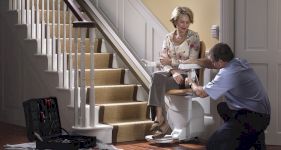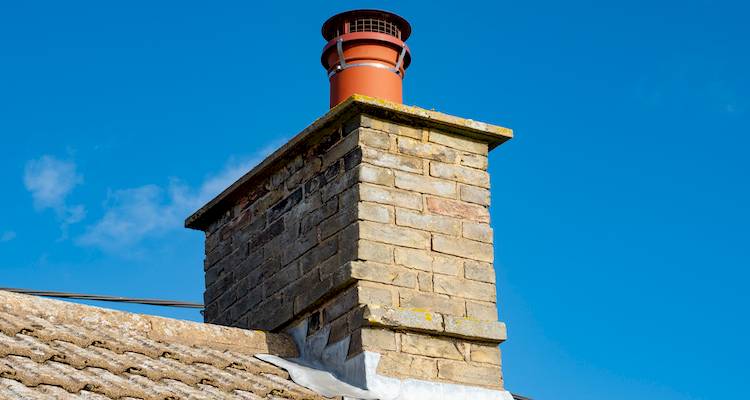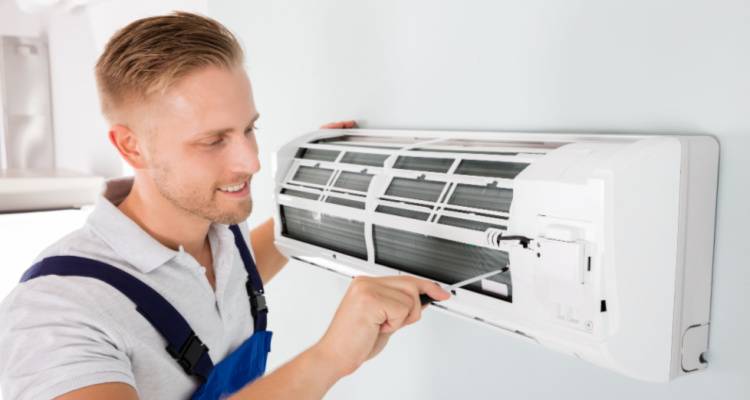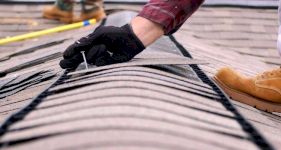Cost of Damp Proof Course
- The average cost of damp proofing a home is around £1,250.
- The job will take approximately 2 to 7 days to complete.
- NEW! Check out our damp proofing cost calculator to find out how much a damp proof course costs.
- A complete pricing breakdown, which includes things you need to consider, along with what such a task usually involves.
- How long the job should approximately take, and a general overview of what types of services can be performed.
- How to find and hire a damp proofing specialist.
Damp and rot can cause extensive property damage if left untreated, so you must recognise and treat them immediately.
In this guide, we'll cover everything you need to know, including the different types of damp proofing options available to you and what a damp proofer cost is likely to be.
So, how much does wall damp proofing cost?
On average, you can expect to pay around £1,250 to resolve your issues.
Just need a quote?
If so, we can help! We have a range of local damp proofing specialists ready to offer you a free quote!
Let's jump in.
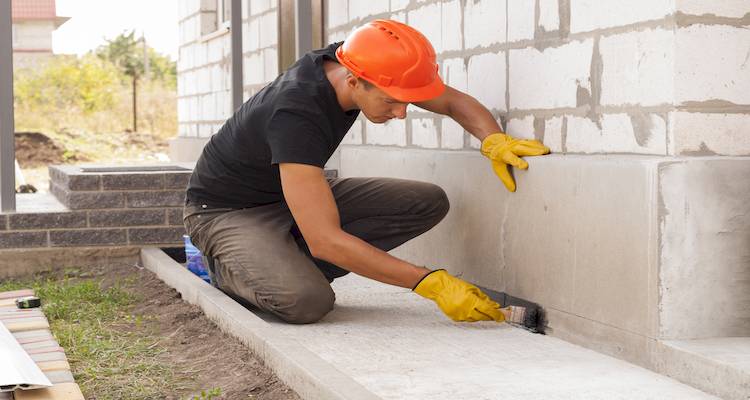
£1,250
Table of Contents
- How Much Does Damp Proofing Cost?
- Supply Only Costs
- Additional Costs
- Labour Costs and Timescales
- Cost Factors of Damp Proofing a Wall
- Types of Damp Proofing, and What's Involved in Wall Damp Proofing
- Benefits of Damp Proofing
- Can I Damp Proof a Wall Myself?
- Building Regulations & Planning Permission for Damp Proofing
- Hiring Contractors to Damp Proof a Wall Checklist
- FAQs
Damp Proofing Cost Calculator
How Much Does Damp Proofing Cost?
So, how much does damp proofing cost on average?
The average cost to damp proof an average-sized property is £1,250. This can vary depending on the size of your property and the method of damp proofing.
What is a damp proof course?
"Damp proofing" is an umbrella term used to describe all methods and treatments for preventing damp from being absorbed through your walls or floors and into the interior parts of your property.
In this guide, we'll look at the different types of damp proofing and the costs involved with the work.
We will also take a look at the additional costs that could come up, the cost-affecting factors that you may need to think about, and some things that you should consider when finding the right contractors for the job.
For comprehensive costs on specific damp problems, see our rising damp treatment costs and penetrating damp costs guides.
What are the different methods of damp proofing, and which is the best for a Victorian brick-built terraced house?
Damp Proofing Prices
Below is a table highlighting the different costs involved with damp proofing a home:
| Type of Work | Average Cost |
|---|---|
| Damp proofing cost (per metre) | £60 – £90 |
| Damp proof course (DPC) cost | £300 – £2,300 |
| Damp proofing on external walls cost | £850 – £2,900 |
| Damp proof injection cost | £1,200 – £5,700 |
| Chemical damp proofing cost | £850 – £3,400 |
The overall price you pay will depend largely on the size of the area that you are damp proofing.
The prices above are the average prices for damp proofing alone and do not include any of the following:
- Damp proofing survey costs
- Removal of plasterboard or render costs
- Painting and decorating costs
- Drying out or dehumidifying costs
Based on these factors, the average cost for damp proofing in the UK is around £1,250.
The table below indicates the different prices for damp proofing work on various sizes of homes:
| Type of Work | House Size | Average Cost |
|---|---|---|
| Damp proof course | Terraced house | £350 – £450 |
| Damp proof course | Semi-detached house | £650 – £950 |
| Damp proof course | Detached house | £1,700 – £2,200 |
| Tanking slurry | Terraced house | £2,800 – £4,000 |
| Tanking slurry | Semi-detached house | £3,100 – £4,300 |
| Tanking slurry | Detached house | £5,000 – £6,700 |
| Replaster | Terraced house | £1,300 – £2,000 |
| Replaster | Semi-detached house | £2,000 – £2,700 |
| Replaster | Detached house | £2,700 – £3,300 |
Supply Only Costs
Below is a table highlighting the different costs for supplies when it comes to damp proofing a home in the UK:
| Type of Supply | Average Cost |
|---|---|
| Damp meter | £25 – £165 |
| Injected DPC | £600 – £2,200 |
| DPC cream | £10 – £17 per metre |
| DPC rods | £17 – £22 per metre |
| Mortar injection DPC | £55 – £70 per bag of mortar |
Damp proofing supply costs vary depending on the type of damp proofing work you are having done and the size of the area being worked on.
In most cases, the contractor will provide all of the materials needed for you, and they will incorporate those costs into the job's overall price.
Additional Costs
When it comes to damp proofing your home, there are some additional costs that you may need to consider. Below is a list of the additional costs that may come with this type of work:
Extractor Fan
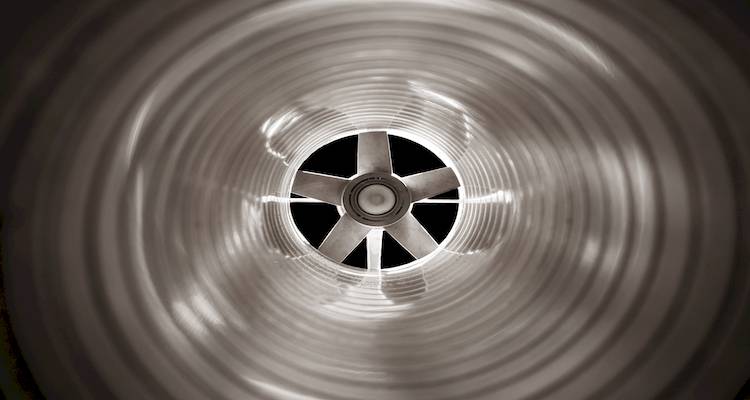
In areas such as the kitchen or bathroom, where the room is prone to becoming damp, it may be good to invest in a good extractor fan to help release some of the damp and prevent it from building up in the room.
The average cost for an extractor fan is around £170 to £275.
Dehumidifier
If your home is prone to dampness, a dehumidifier is one of the best investments you can make. These machines are designed to extract and collect moisture from the air. They then release the clean, dry air back into the room.
This is great for preventing damp, but also great for your health. The average cost for a dehumidifier is around £85 to £120.
Leaking Roof Repair
If you find that the cause of damp in your home is a leaking roof, you will need to get this repaired quickly. The price you pay for this type of work will depend on the extent and type of leak.
The average cost to repair a leaking roof is around £60 to £120 per m².
Replacement Gutters
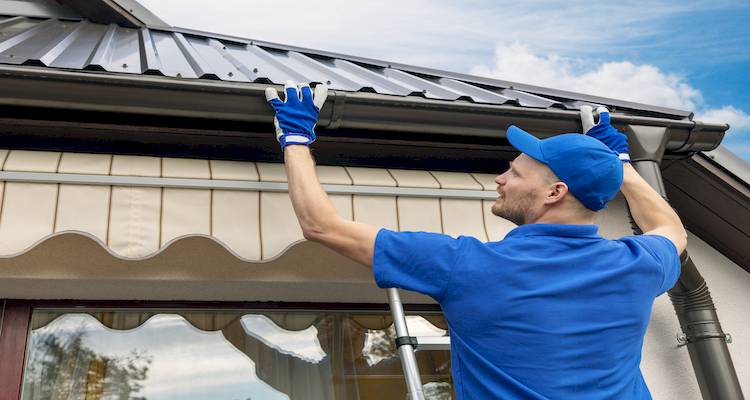
Sometimes, the cause of damp is due to leaking or faulty guttering. If this is the case, you may need to invest in new gutters.
The average cost for replacement gutters is around £520 to £790, depending on the size of your home.
Window and Door Resealing
You can further prevent damp from becoming an issue by having your doors and windows resealed. The average cost of window resealing is around £60 to £75 per window, and £90 to £110 per door.
Plastering
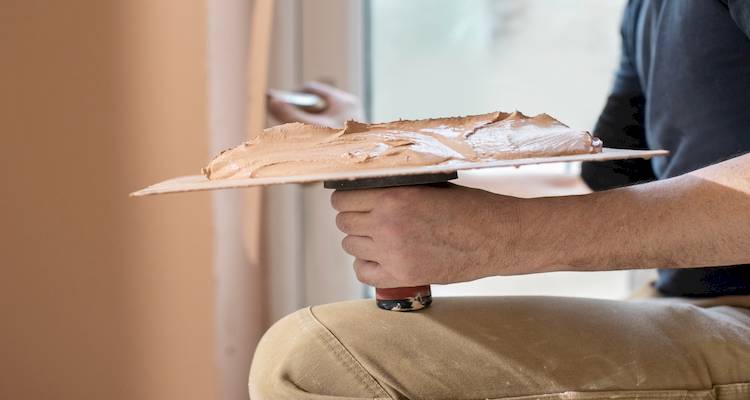
Damp proofing your home will often make quite a mess of the walls, and you will often need to get these replastered.
The average cost of plastering walls is around £450 to £800 per room.
Rendering
When you get an external damp proof course, you may need to get your home rendered afterwards. The average cost of rendering a home is around £4,500 to £9,000, depending on the type of render and the size of your home.
Painting and Decorating
Damp proofing a home can make a real mess of the walls. With this in mind, you'll likely need to redecorate once the work is complete. The average cost to have your home painted or wallpapered is around £230 to £450 per room.
I've had some mild rising damp identified on internal walls. The builder has slabbed directly to the wall, but the damp proofer advised that the wall should have pressure-treated timber battens before the board went on. Which is better?
Labour Costs and Timescales
Damp proofing labour costs usually range between a daily fee of £120 to £220.
This will depend on their level of expertise and your location in the UK. Those based in the London area can expect to pay more for the labour part of the job than those based in the north or other parts of the UK.
The time it takes to complete the work will depend on a range of factors, including the size of your home, the size of the area being worked on, the extent of the job, and the ease of access to the worksite. Damp proofing will usually take around 2 to 7 days to complete.
Cost Factors of Damp Proofing a Wall
Several factors can affect the cost of damp proofing your home. Below is a list of the main cost-affecting factors that you may need to be aware of with this type of work:
Severity of Problem
The longer the damp has been left untreated, the worse the damage will be. If the damp has been ignored or simply covered up, you may find a lot of hidden damage that you weren't aware of.
Once your contractor has completed a survey, they may uncover more problems than you realised. If there is extensive damp damage, this can affect the structural integrity of your home and will, therefore, require more work.
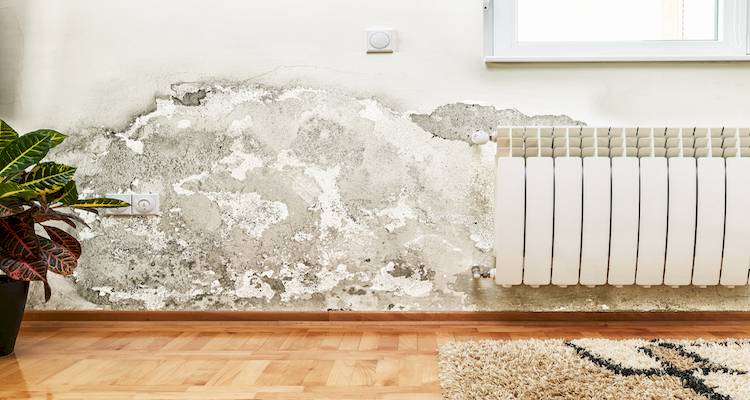
If the damage is small, the work tends to be quite simple, and the damp effects can be reversed by drying out the affected area. With this in mind, the worse the problem is, the more you can expect to pay.
Type of Treatment
There are several different types of damp proofing treatments, and the type you need will depend on the type and severity of the damp problem in your home. Some issues can be quite simple to fix, and others may require more extensive work.
Treatments that take longer to complete will incur higher labour costs that can add up depending on the length of the job.
Size of the Treatment Area
Depending on the cause of the damp in your home, it may be limited to just one small area. In these cases, the work won't take anywhere near as long as some other jobs, so you will end up paying much less.
For more severe cases where the damp has spread through several rooms, this will take much longer to complete and will end up costing much more.
A survey found ongoing penetrating damp in two rear chimney breasts. Some neighbouring homes show similar issues, possibly due to a design flaw, and the surveyor says intrusive roof investigations and full chimney breast removal may be needed?
Types of Damp Proofing, and What's Involved in Wall Damp Proofing
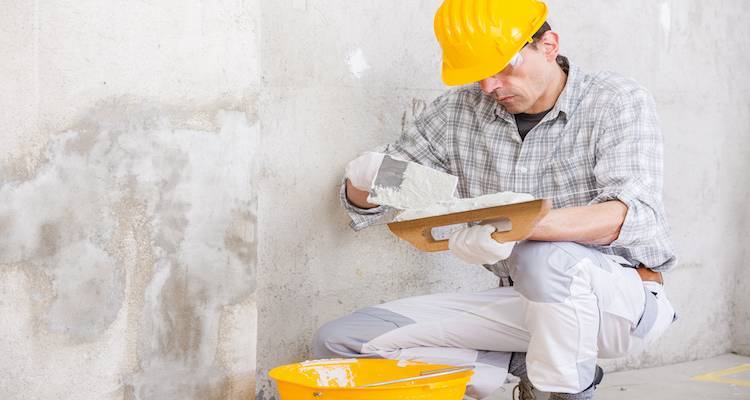
There are several different types of damp proofing jobs and different ways to effectively damp proof your home.
Here are the details on each of the different damp proofing methods and their best use cases, so you can decide which is best for you:
Damp Proof Course (DPC)
A damp proof course (DPC) is a type of damp proofing installed in a property to prevent damp problems from occurring.
These are usually installed on new properties during the building phase, as it is a regulation now that all properties must have a damp proof course for health and safety reasons. There are various methods of installing a damp proof course. The most common process is a damp proof injection.
This type of treatment involves injecting a damp proof cream made up of a silicone-based liquid into the walls. This liquid reacts with the silica in the masonry to produce a waterproofing layer within the wall that prevents dampness from entering the home.
The following steps will be taken to install a new damp proof course:
- Drill holes in the wall measuring 12mm in diameter at intervals of 115mm and at least 150mm above the ground.
- Inject the damp proof course starting from the bottom until it is full.
- Fill each hole with plastic plugs or cap them with mortar to prevent leaks.
Tanking Slurry
A tanking slurry is quite a big job as it involves removing all of the plaster, paint, and wallpaper from the wall surface before the work is completed. This type of damp proofing works best in basements or rooms with high levels of moisture.
A professional tanking slurry involves these steps:
- Plaster, paint and other debris need to be removed from the wall surfaces and then cleaned.
- A salt neutraliser will then be added to the wall to prevent existing salts from affecting the tanking.
- While the wall is slightly damp, holes are filled with mortar, cement, sand, and a waterproof element.
- The wall then needs to be dampened again before applying the tanking slurry. It should be applied with a soft paste brush horizontally.
- It then needs to be left for 24 hours to dry before another coat is added.
Damp Proof Paint
Using damp proof paint is a fairly simple method of damp proofing, but it's only suitable for mild, surface-level issues, and not deeply penetrating damp.
To damp proof your home with damp proof paint, the following steps will be taken:
- Any damp plaster will be removed, and all loose fixtures will be secured.
- The wall will then be cleaned with all existing paint removed.
- The first coat of damp proof paint will be applied using spray or a brush.
- While the paint is still wet, dried kiln sand will be added to smooth out the surface.
- The second layer of paint will then be added.
Replastering
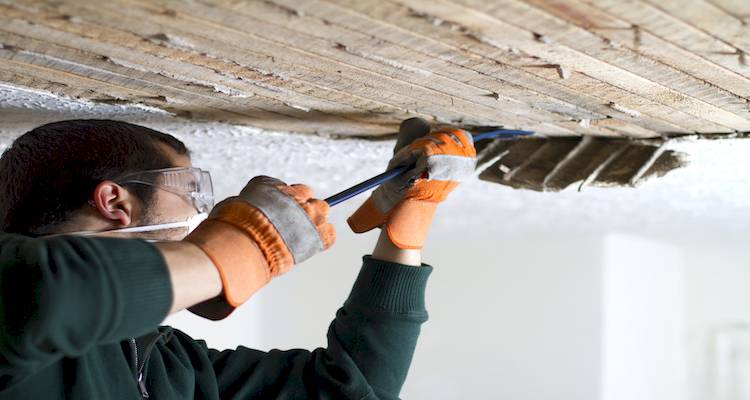
Once your damp proofing treatments are complete, you'll likely need to replaster your home's walls to clean up the surface and allow you an even surface on which to decorate.
Here's the general process of replastering:
- A layer of PVA glue will be applied to allow the plaster to dry out evenly.
- While the glue is still slightly wet and sticky, the plaster will be mixed and applied to the wall.
- When the first coat of plaster has been applied, it should be left for 20 minutes before it is skimmed and smoothed out to get rid of any bumps.
- After that, a second coat can be added, but this will be a much thinner coat than the first.
- Water will then be applied to the surface to smooth out any bumps. Sanding paper will then be used to smooth out and remove any excess plaster.
After the plastering work is completed, the wall can then be redecorated.
We have rotten floorboards in our back downstairs room, and also by the front door. Is replacing floorboards or concrete the answer? In the front room it's only a few boards, but we also need possible damp proofing.
Benefits of Damp Proofing
There are many benefits to damp proofing your home. Below is a list of the advantages of this type of work:
Prevent Structural Problems
Leaving a damp area untreated can cause damage to the timbers in the structure of your property. Dampness can cause the wood in your structural timbers to rot, and they can even potentially collapse.
Choosing to damp proof your home can prevent any chances of rotting from occurring and helps to keep your property safe and secure.
Improve The Appearance of Your Home
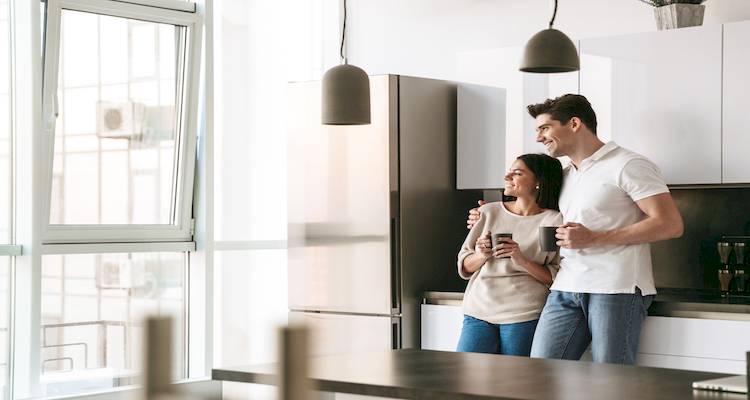
Dampness in the home can cause unpleasant dark patches on your walls that can look very unsightly. It can also cause your wallpaper to wilt and peel and can cause paintwork to crack.
Damp-proofing your home will prevent this from happening, and you can decorate your home freely without the worry of any damp-related appearance issues.
Avoid Reducing the Value of Your Home
Many people choose to cover up the damp in their home rather than getting it treated properly. However, unless you get your damp problems treated professionally, they will keep coming back and could get much worse over time, causing a lot of damage to your home.
The sight of damp may prevent future buyers from wanting to buy your house. If you damp proof your home professionally, you can avoid this issue.
Prevent Health Issues
Several health issues can occur due to dampness in the home. Mould and mildew thrive in damp conditions, and mould can cause various health issues, including coughing, wheeziness, headaches, throat and eye irritations.
Damp-proofing your home will eliminate any potential damp-related health issues and will help to keep you and your family safe.
Avoid Unpleasant Smells
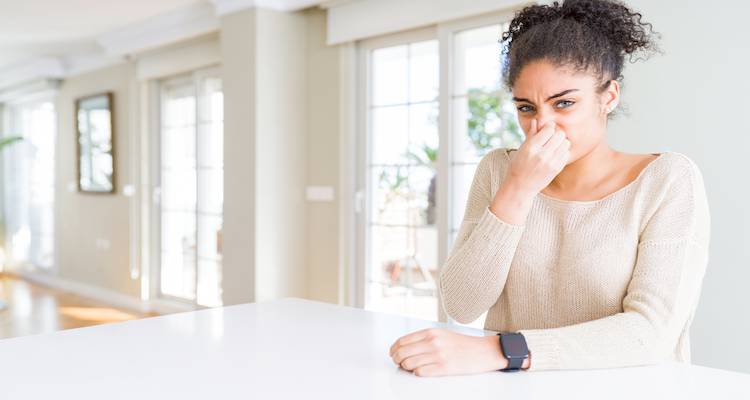
Damp problems in the home can lead to unpleasant smells, especially when there is a significant amount of mould. If left untreated, the smell of mould and damp can become overwhelming.
By using a damp treatment process, this will eliminate all odours of damp from within your home.
Can I Damp Proof a Wall Myself?
Damp proofing can often be quite extensive work, and it's important to carry it out correctly to ensure that the damp is fully taken care of and won't return.
With this in mind, it's a good idea to leave this type of work up to a professional damp proofer. Some types of damp proofing, if done incorrectly, can cause damage to your home.
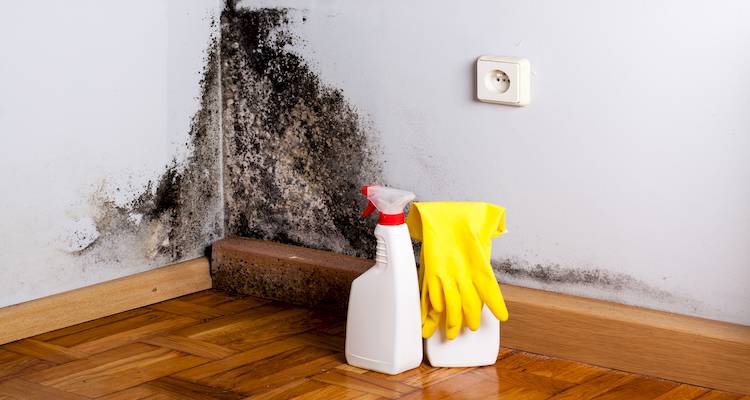
Many of the DIY damp proofing options involve hiding the damp rather than actually treating the cause. If you choose to hide your damp with one of these treatments, it will cost you more in the long run, as the damp will only get worse over time.
Some aspects of the work can be done as a DIY job. For example, you could save some money by redecorating the rooms yourself rather than hiring a professional for this part of the job. This could save you around £230 to £450 per room.
Building Regulations & Planning Permission for Damp Proofing
Any work involving damp proofing is usually classed under permitted development. However, if your damp proofing is part of a larger project, you may need planning permission.
Projects that typically need planning permission are:
- Altering the external appearance of the property.
- Changing the use of an existing basement.
- Creating a new basement.
If your property is a listed building or in a conservation area, you will likely need to apply for planning permission for damp proofing. If you're not sure whether you will need planning permission or not, it's best to get in touch with your local authority for some advice.
When it comes to damp proofing the walls, you must adhere to some building regulations and rules. The rules state that your damp proof course should:
- Join up with any damp proof membrane or damp proof course on the flooring.
- Be a minimum of 1.5cm above the ground if the work is on an external wall.
- Be a minimum of 2.25cm above the bottom of a cavity unless a cavity tray is installed.
Hiring Contractors to Damp Proof a Wall Checklist
You will need to consider a few things before hiring contractors to damp proof your home for you.
Below is a list of some of the main things that you should consider when looking for the right contractors for the job:
- Does the contractor offer any guarantees with their work?
- How much is the work to complete? – Ask for a breakdown of costs so you can ensure you are paying a good price for each element of the job.
- Is the contractor experienced in installing the type of damp proofing that you are looking for?
- Will the contractor take care of any relevant waste removal?
- Do you need to hire any additional contractors for different parts of the work?
- Will the contractor follow all of the relevant building regulation guidelines?



